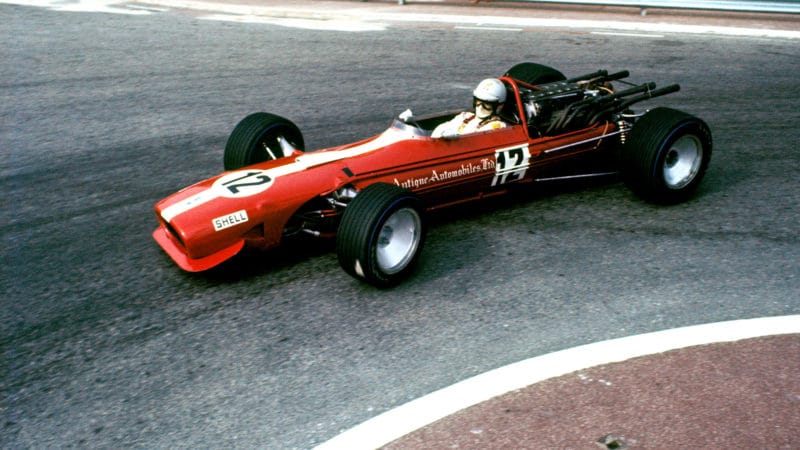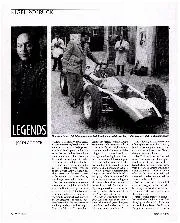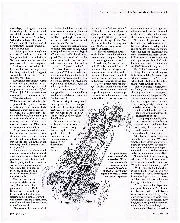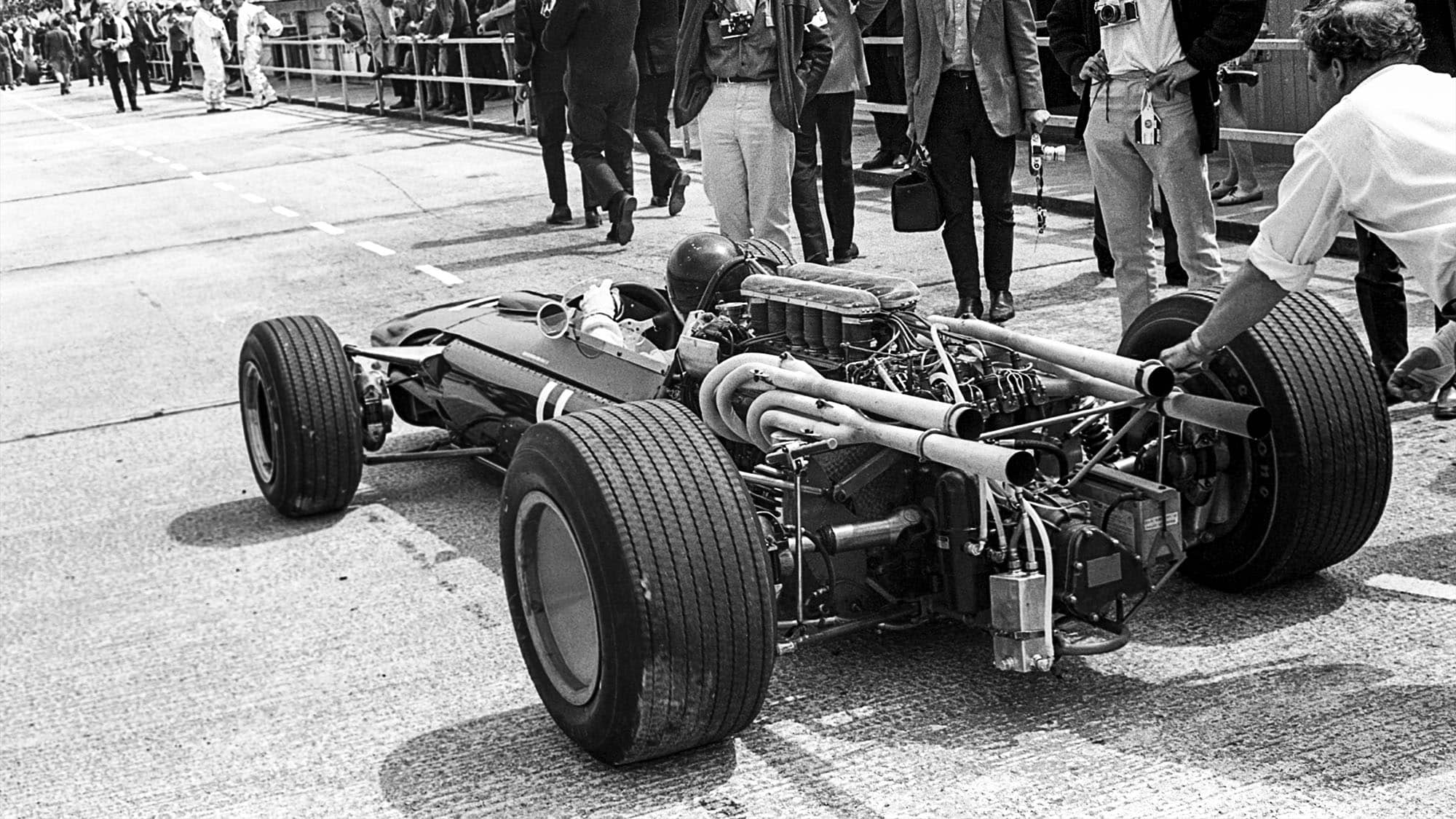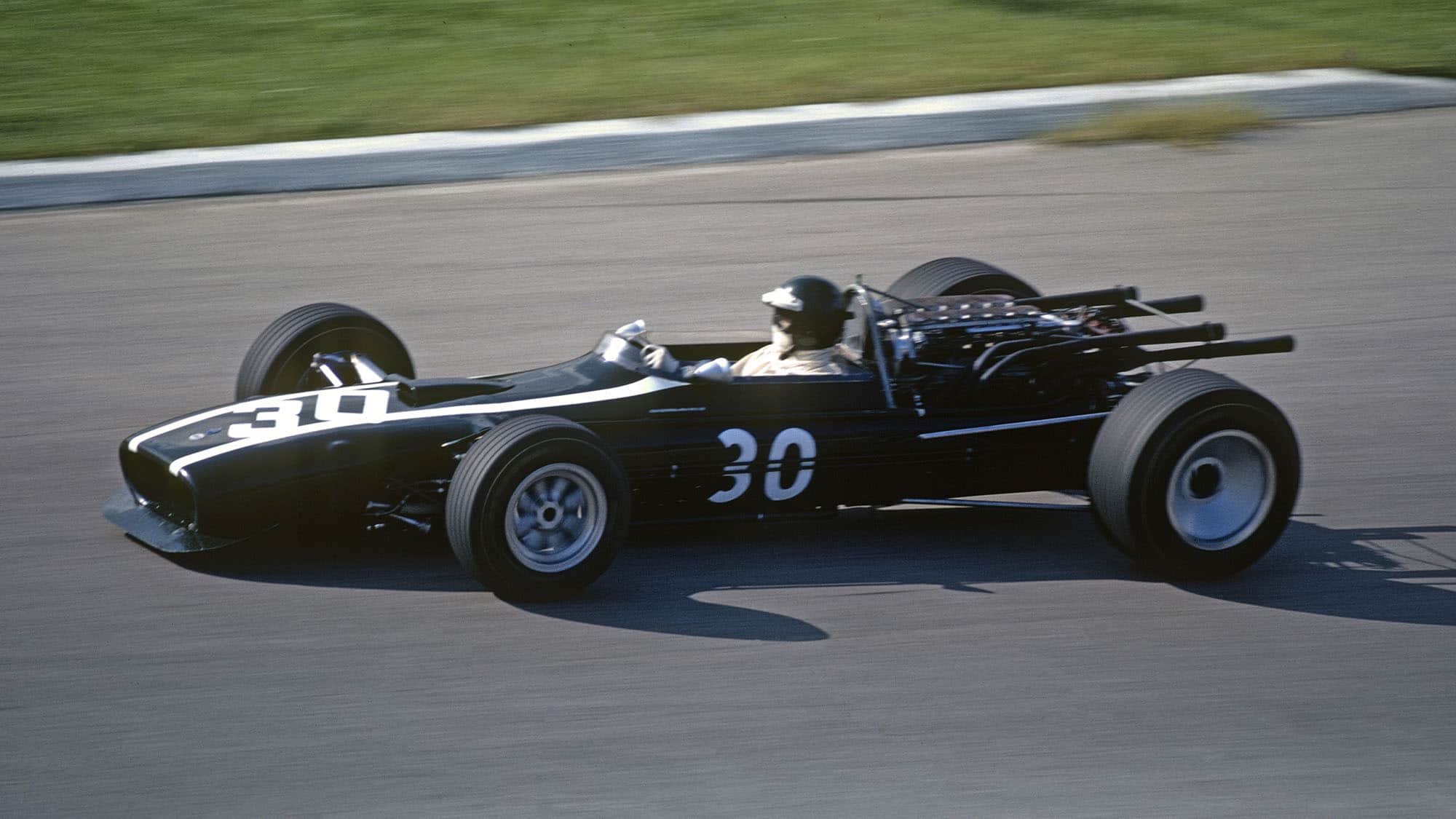Not only was the motor underpowered, it was heavy, overly complex and unreliable. And this, mind, before the Cosworth-Ford DFV came along in 1967 and did for F1 engines what Cooper had done for F1 chassis eight years earlier. Cooper raced the T81 through ’66 and into ’67 while the T86 was readied. “It was the last gasp,” recalls Ben Liebert, the car’s current owner and the man who commissioned MacDonald Race Engineering to conduct an impeccable four-year restoration to return it to original condition and make it race-worthy once more. “They chucked everything at it to get rid of the weight and make it competitive. Everything that could be made in magnesium was, from the tub to the engine block. It must have been hideously expensive.”
It also features the last Type 10 engine, with three-valve heads and two plugs per cylinder. Looking at the two vast distributors mounted high up either side of the motor and their 24 leads, Ben sighs: “I think Keith Duckworth once said there was something wrong with your combustion chamber if you needed more than one spark per cylinder and, you know, I think he was right”. His engine, rebuilt with an aluminium block after the mag unit sadly but inevitably perished, gives 330bhp at 9000rpm, exactly the number recalled by Salvadori, and at least 40bhp shy of the output of even the earliest DFVs.
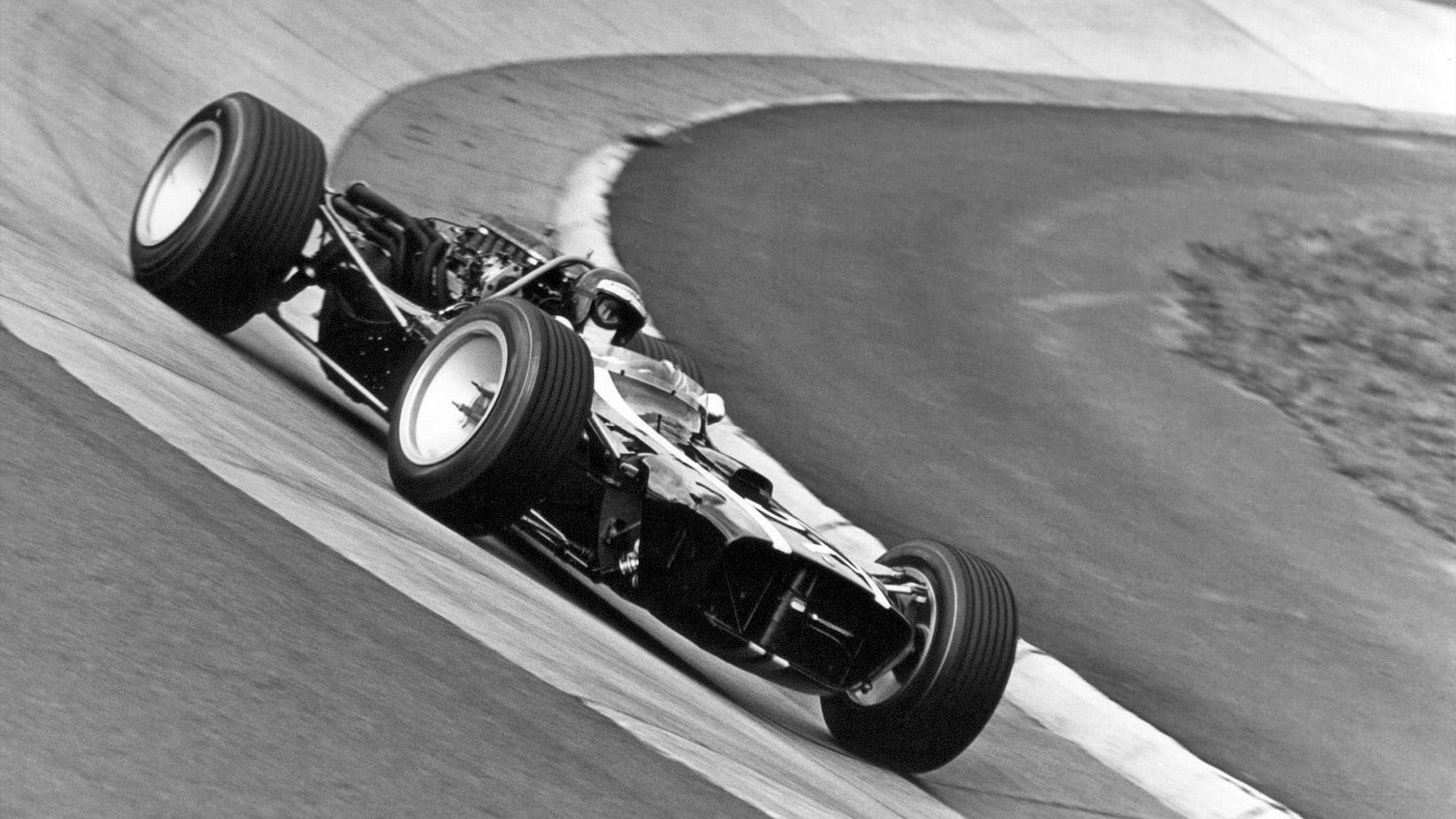
Rindt takes on the ‘Ring in T86
Getty Images
But I doubt he’d swap it. Today it’s sitting in a decidedly damp Donington pitlane on a noisy test day and when it fires up, all other activity stops. Drivers of racing Porsche 911s and even DFV-powered F1 cars are drawn to this unfamiliar old racer like moths to a blazing light. Even at idle the noise occupies the space between your ears so entirely, it seems there’s barely room left for thought. It’s rich, meaty and angry, less sabre-sharp than a rival Ferrari V12 perhaps, but not one whit less interesting for that. I make the mistake of standing behind the spaghetti stack when the engine is blipped for the first time and feel the inside of both ears itch.
Moments later I’m being strapped in, preparing to give the T86 some much needed exercise around the now mercifully drying track. This is only the fourth time it’s run since it’s been rebuilt, having been tested twice and raced once at Magny-Cours by Ben, in which it became embroiled in a long battle with exactly the same Brabham BT24 which just beat it at Monza 39 years earlier. “It had a reputation for being heavy,” says Elford, “but I reckoned it was a lovely car to drive — light, driveable and nicer by far than the lead weight in the back they replaced it with.” He’s referring to the unloved BRM-powered T86B with which Cooper finished its official participation in Formula 1 in 1968.
There’s nothing remotely complicated nor, indeed, inherently difficult about driving the Cooper-Maserati. The engine makes a terrifying noise but is in fact so docile that it’s like a sleepy Labrador compared to the slavering Rottweiler that is a DFV — or at least the DFVs they make today. If you can’t find first gear, it’ll creep away in second without a moment’s complaint.

